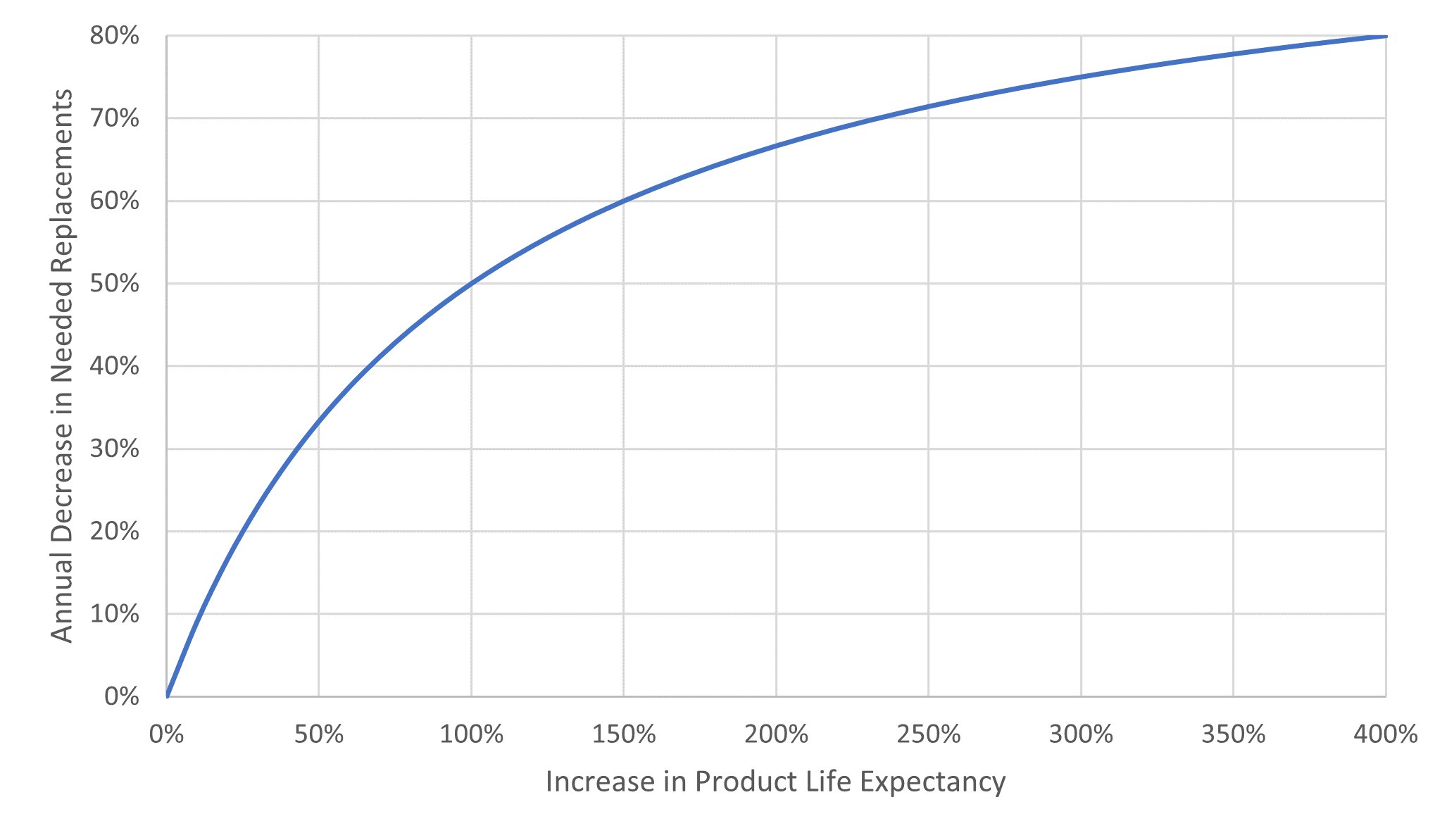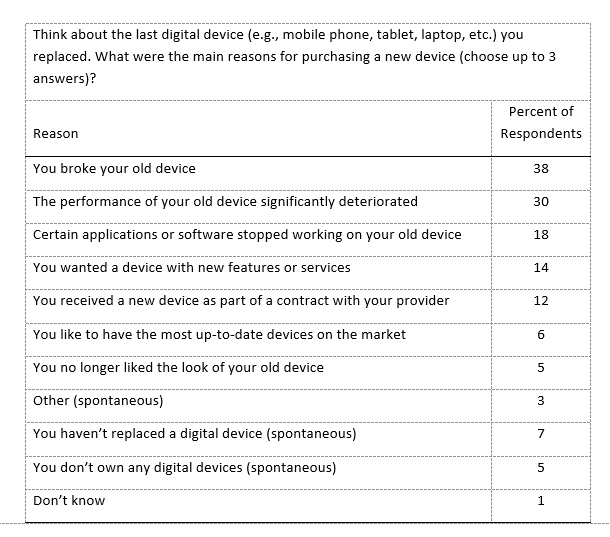Circular Economy: Product Longevity

READ THE REPORT HERE

The challenges related to producing long lasting products along with reusing and repairing them results in at least two needs. The first is the need to be able to differentiate product brand and models by life-expectancy. This might be achieved with a standard metric for measuring life-expectancy, such as an index or score. This would allow consumers to reliably choose longer lasting products if they want them and would allow manufacturers to benefit from producing longer lasting products. Solving this need is also likely to have a significant impact, as there are direct benefits to producers and consumers. Without the ability to differentiate products by life-expectancy, it will likely be difficult to increase the average life-expectancy of a product category. The second need is to be able to differentiate products by repairability. Similarly, this might be achieved with a standard metric for measuring the ability to repair a product, such as an index or score. This would allow consumers to reliably select products that they can repair and allow manufacturers to benefit from producing repairable products. Again, without the ability to differentiate, it will be difficult to increase the repairability of a product category.
If a product lasts longer, consumers tend to replace them less frequently, thereby reducing the number of items manufactured. Extending the useful life of a product generally applies more to durable goods. Discrete tech products account for 6.9 % of the U.S. economy’s environmental impact and discrete products account for 14.2 %. If a product’s life expectancy increases by 50 %, it decreases the needed replacements and commensurate environmental impacts by approximately 33 %. A 100 % increase in life expectancy reduces needed replacements and commensurate environmental impacts by 50 %, if products are used to their end of life. In 2020, consumers spent approximately $949.8 billion on vehicles, appliances, tools/equipment, and other electronics. Using Figure 4.1, a 50 % increase in the life expectancy of these items (e.g., increasing the life expectancy of a washer from 12 years to 18 years) could translate to up to a $316.6 billion annual consumer savings (few purchases) or, on average $2588 per household. Appliances alone amount to $21.1 billion. However, this is likely an upper bound limit as it is important to note that some consumers replace these items for aesthetic reasons rather than out of necessity, which would reduce the estimated savings.

Three means for extending the use of a product is to (1) design the product to last longer, (2) reusing a product, and (3) repairing a product rather than discarding it. When asked how long individuals would like to use their digital devices, a survey of Europeans showed that 64 % wanted them to last at least 5 years, including 26 % that indicated at least 10 years assuming there is no significant drop in performance (European Commission 2020). Thus, many consumers do have a desire to utilize digital devices longer. As seen in Table 4.2, the most common reason for replacing a digital device was that it broke down, accounting for 38 % of replacements followed by a decline in performance (30 %) and software stopped working (18 %). For appliances, Statista estimates that 88% of home appliance replacements are due, in part, to broken devices (Kunst 2019). Moreover, consumers want their products to last but must replace them because they break or lose functionality.
Table 4.2: Survey Responses Regarding Digital Device Replacement
Source: European Commission 2020

As manufactured goods have become more complex, consumers understanding of these products have diminished and their ability to repair them has been hindered (Cooper 2012). Additionally, products can be designed to either hamper or facilitate repairs. For instance, a product may be difficult to open, have proprietary fasteners, or use glue instead of screws, affecting the ability to repair it. Products are often designed in ways that hamper repair, sometimes due to costs/challenges and sometimes intentionally (Cooper and Salvia 2018).
Contacts
-
(301) 975-4918

